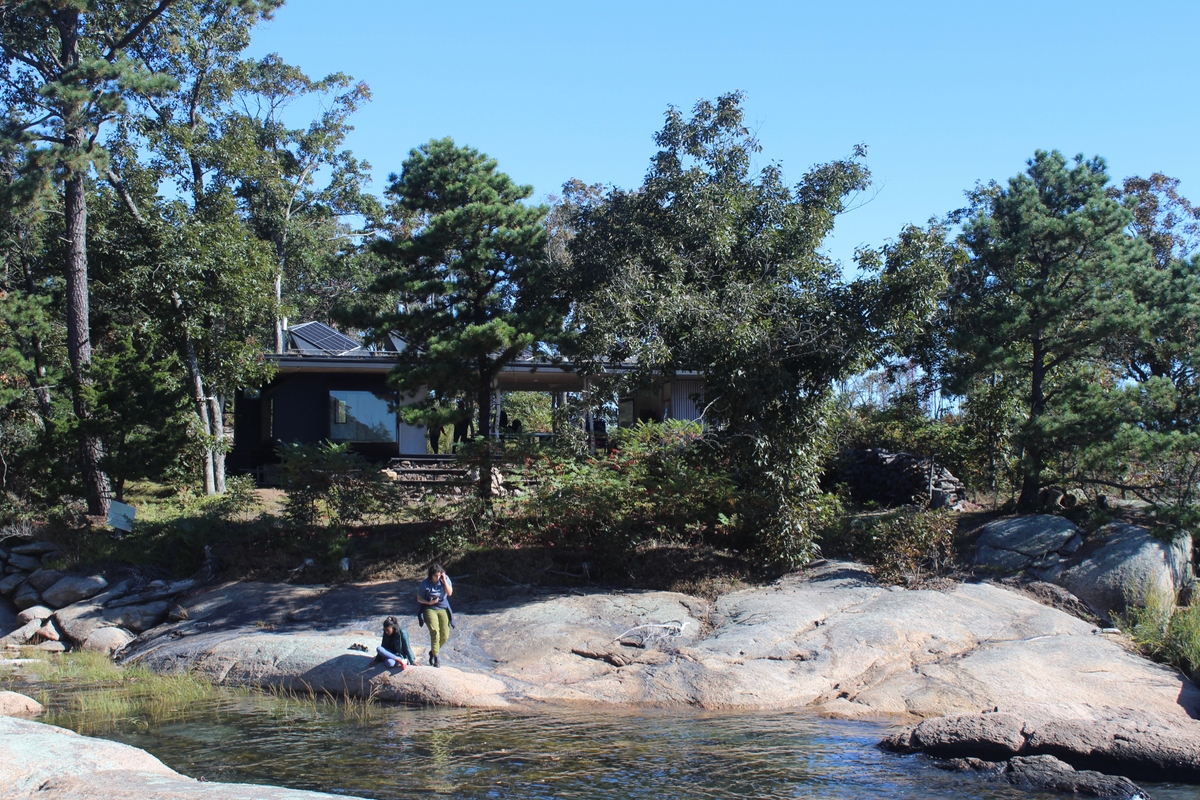
Brian Slattery Photos
It was a recent and glorious autumn day at the Horse Island Research Station, a Yale property among the Thimble Islands off the coast of Branford. Outside, a group of birders, all Yale students, were fanning out across the island, taking pictures.
Inside the research station, Nate Utrup, museum assistant in collections operations at the Peabody Museum, and Ray Zelek, an electrician who specializes in solar installations, were troubleshooting the solar panel array, which was down for the first time since they were installed in the summer of 2021. A generator grumbling outside kept the lights on for the moment.
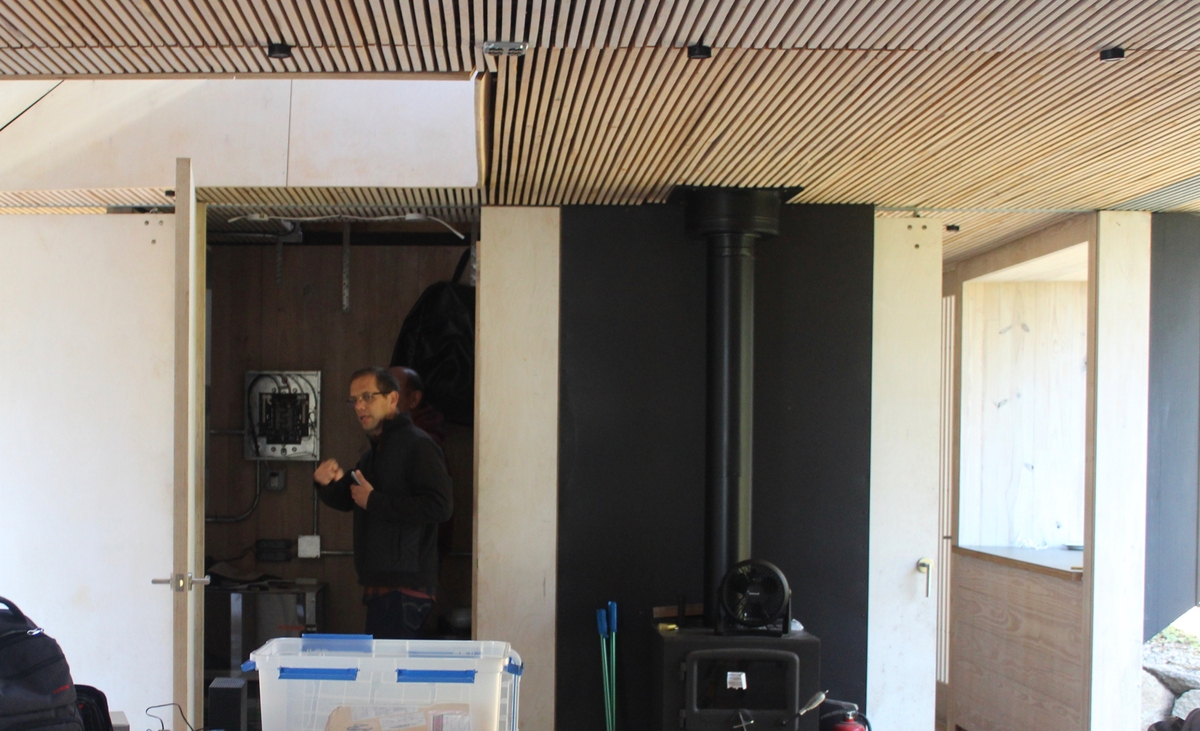
It wasn’t the panels themselves, Zelek and Utrup had ascertained, nor the wiring, that kept the power off. They would figure it out.
The technical difficulties were in some ways to be expected, because the building itself is an experiment in regenerative architecture, a school of thought that seeks to create buildings that are beyond sustainable. Ideally, they don’t just have zero impact on the environment, but may in fact reverse some of the damage humans have done.
When most people think about sustainable buildings, they think mostly about a building’s operations, said David Heiser, director of student programs at the Yale Peabody Museum, which oversees Horse Island. People think about whether it runs on solar power, what fuels its heating system, whether it’s well-insulated and efficient. “That’s a big part of regenerative design as well,” he said. But it also goes a few steps further.
Regenerative design “takes into account the complete lifecycle of the building,” Heiser said. “You think about the flow of materials and resources into and out of a building’s life,” right from the start, in assessing the site where a building is to be built — and right to the end, in imagining the building’s eventual demise. For the Horse Island research station, imagining the building falling into decay meant that “there were no nails and few adhesives used. It was basically put together with bolts, screws, and pegs so you could take it all apart at the end and reuse the bits that are reusable.”
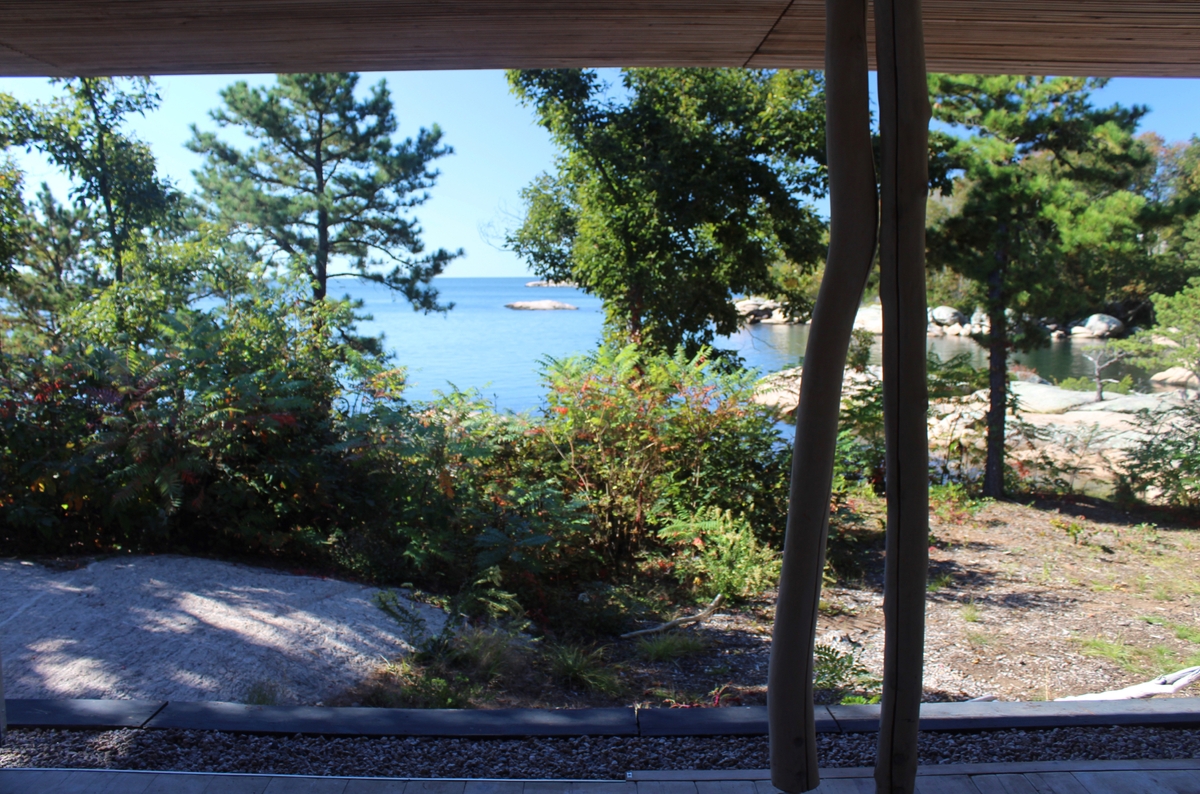
View from inside the building when walls are opened.
The design principles also weigh “where the materials are coming from” to create the building, “what kind of resources had to go into producing those or getting those” to the site. The flooring of the research station is made from cross-laminated timber that “was being used by the Bureau of Alcohol, Tobacco and Firearms, who were testing the ability to build buildings higher than a few stories using wood,” Heiser said. (The tests showed that CLT is quite fire-resistant.) The wood slats on the walls and ceilings are made from hemlock from Yale’s Myers Forest that was killed by hemlock woolly adelgid and salvaged. Sassafras trees on Horse Island itself that had to be cleared from the building site were reincorporated into the building as posts. The glass windows were salvaged from the Peabody Museum’s Discovery Room. Chairs were taken from the Peabody’s auditorium.
The lead architect on the project was Alan Organschi, of Gray Organschi Architecture, who is also a senior critic and director of the Building Lab at Yale’s School of Architecture. Organschi had pitched the idea of a regenerative building lab to the school along the lines of the school’s Jim Vlock First Year Building Project, which builds affordable housing in New Haven. This led to a class in regenerative design through the schools of architecture and the environment. The course was offered in the spring of 2020, during which the site on Horse Island was chosen.
Yale had acquired Horse Island in 1971 “to be a place for coastal and marine research,” Heiser said. “It was never meant to be developed or turned into something quasi-commercial.” But the director at the time, Charles Sibley, “had something in mind akin to Woods Hole,” Heiser said, a “prominent site for research. That didn’t exactly happen.” But the Peabody under the current directorship of David Skelly “really wanted to try to reactivate that,” making Horse Island more accessible for faculty and students, heading toward Sibley’s vision. If the Peabody could build the right structure, “we knew there would be some use for teaching and research.”
"Completely Off The Grid"

Heiser in the research station kitchen.
The building was built, including a small kitchen and bunks, and usable by the summer of 2021 thanks to bringing in water, though without the composting toilet, it was “glorified camping,” Heiser said. But the solar power system was online.
In the summer of 2022 the Peabody was “able to use the building more,” including for an artist residency in collaboration with the Yale School of Art. In the summer of 2023, the composting toilet was installed; the wood stove for heating (fueled by downed trees on Horse Island) were completed this fall. The rainwater collection and purification system — the ultimate goal for supplying water to the building — is almost finished.
All of this has taken time thanks to the difficulty of building anything offshore, and the need for the weather to cooperate.

Heiser with the "barnacles"; roof structures that house solar panels, skylights, ventilation, and rainwater collection. Wood stove chimney at center. The roof has a layer of soil on it; native plants growing there will keep the building cooler in the summer and warmer in the winter.
“There’s a reason why it takes a long time to do something on an island,” Heiser said. “But the promise from the beginning is that we can be completely off grid.” And with faculty starting to bring classes out to the station, and students beginning to do research there, Horse Island “is starting to get the use that I think had always been intended. Having this infrastructure makes all the difference.”
Helping fulfill that promise, Zelek and Utrup fixed the solar array. They ascertained that it was “a weird hardware fluke,” Utrup said. In the manner of so many technical problems, they weren’t sure “why it happened in the first place,” he added. “But now we know how to fix it.”
"It's All Energy Input"

Alan Organschi.
For Alan Organschi, the success of the building on Horse Island is, first, a testament to the work and ingenuity of the students in the lab, and the open-mindedness of town officials in Branford in their willingness to square progressive architectural ideas with current zoning and building regulations. As a model of the principles of regenerative design, it also has several conveniences.
It’s a small structure, intended for periodic use rather than permanent residence. The demands on the water, electrical, and heating systems that support it aren’t nearly what they would be if someone lived there all the time — let alone if one were designing an apartment building or planning a city block. As an institution, Yale has access to resources, from raw materials to funds to labor, that almost no other institutions in the area have.
But the general principles behind the ways the building was conceived, sourced, and built have something to say for building at any scale. “The dense aggregations of buildings” that make up the city of New Haven are “many things,” Organschi said. Among other things, “they are huge stockpiles of material, at a very basic level.” That material cost time, money, and other resources — like carbon emissions — to create. It began as material on the ground or “in the lithosphere. It got dug up, or sometimes cut down from the biosphere, and made to make these buildings.” Further energy went into making sure the materials would work in creating safe, functional buildings.
“It’s all energy input,” Organschi said, “an investment we’ve already made, and the atmosphere has already made. Some habitat has already been sacrificed to make this stuff, and we should be protecting it.” When taking down a building, instead of throwing all the materials away, “you solve to reuse them in creative ways that make them more valuable again, and extend the amortization time of the cost of putting them up in the first place. And at the very least, acknowledge that they’re sources of material with which we can creatively create more buildings.”
That has implications for New Haven as a model city, as successive generations have torn down and rebuilt entire neighborhoods, burning through resources in the process. Could all that material have been used again? How?
Regenerative architecture borrows from the much older ideas of regenerative agriculture — the basic idea that one can grow food in ways that actually improve soil health and biodiversity — and reaches into mining, logging, construction, engineering, and the policies that govern them. It pushes beyond the ideas of sustainability that have shaped much policy, environmental and otherwise, since the 1980s to ask not just whether we can maintain certain levels of, say, carbon dioxide emissions, but reverse them.
Can buildings be made in such a way to “promote the restoration of ecosystems?” Organschi asked. Part of that question isn’t just about reusing existing materials, but sourcing new materials differently. The sassafras columns at the research station are a small example of that; they were cut down to allow other trees room to grow and create a more robust forest canopy on the island. Writ large, “given the extreme scenarios we’re experiencing due to climate change,” it’s perhaps fair to ask if we can, say, harvest construction materials in a way that doesn’t just preserve, but benefits the forest they’re taken out of. And if, globally, the construction industry could help regenerate forests all over the world, what would that mean for reducing the amount of carbon dioxide in the atmosphere?
The consequences of this type of thinking quickly ripple out, raising questions about everything from the way buildings are conventionally built to the economy, the incentives and disincentives built into our economic system that makes those conventional ways make sense. Organschi sees a new way to structure the flow of construction materials that dramatically reduces waste. It looks more like a network of small providers than the system of a few big providers that we have now. He teaches his architecture students to “design for disassembly,” using bolts more than nails, nails more than glue. But if a building were to be deconstructed, its materials ready to be used again, how would they get used? How could they make their way to the people who want to use them?
"Who Is Responsible For Unmaking The House?"
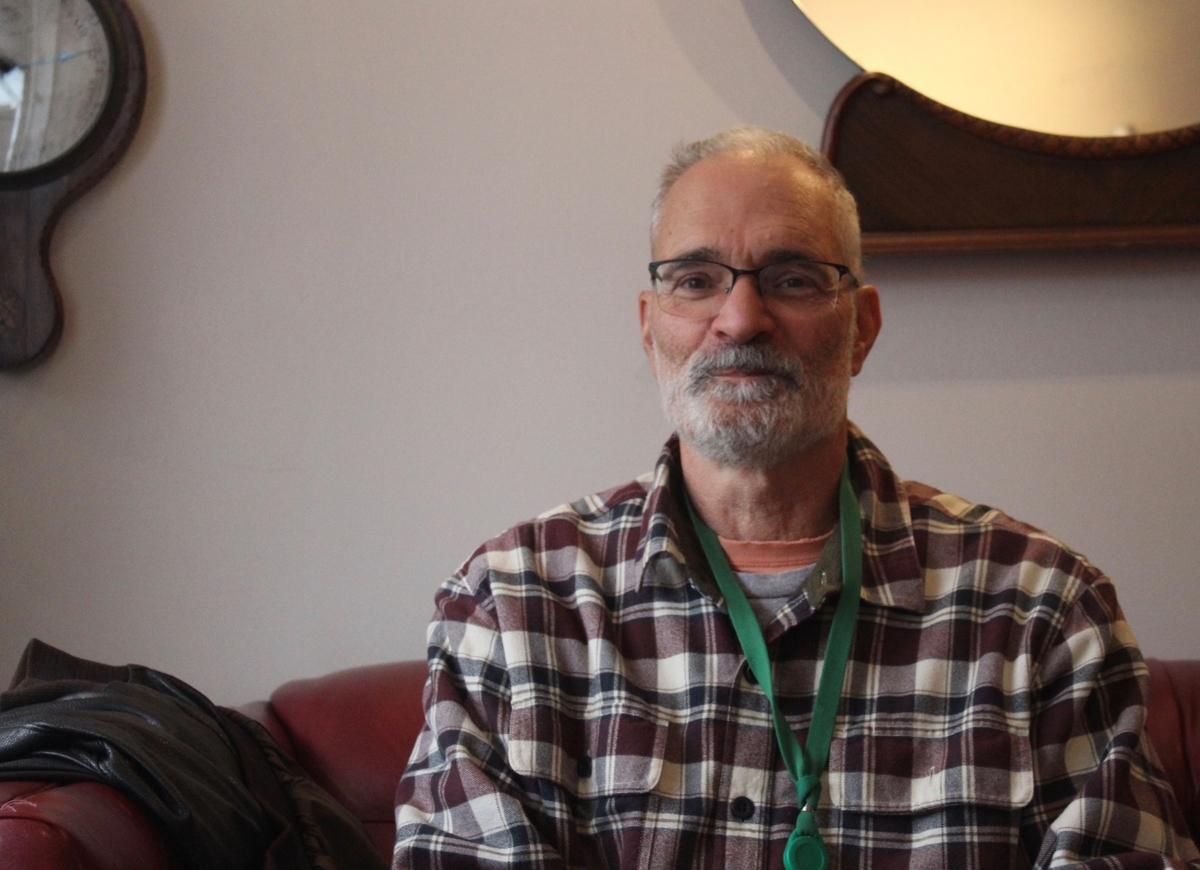
Joe DeRisi.
Enter Joe DeRisi. He’s the recycling coordinator for the town of Hamden and also the founder and main force behind Urban Miners, which, since 2007, has been deconstructing houses rather than demolishing them and then reselling the materials to a wholesaler — from timber, appliances, and cabinetry to windows and metal hinges — or setting up donating them to a resell center (among other services) so the homeowner gets a tax break. When he thinks about regenerative architecture, he thinks about the people who make a house. “Who is responsible for unmaking the house?” he asked.
The inspiration for Urban Miners started with a 1990 publication from Worldwatch Institute, a (now closed) environmental research organization, about reusing materials. “There was a line in there that said that, at some point, more materials will be extracted from existing urban areas than will be newly mined.” The idea stuck with him. He worked as a contractor, doing painting, construction, and demolition projects, and started salvaging stuff, saving it in his garage in Fair Haven and cleaning it out again with tag sales.
Years later DeRisi was salvaging marble out of the old Graves cigar building at 210 State St. with a colleague. It was dark and there was no electricity, and DeRisi joked that he needed a miner’s helmet with a headlamp on it. The idea from 1990 came rushing back, that he was doing “urban mining, extracting resources from a city instead of a mine.”
Today, he would even augment Worldwatch’s statement, that “we might get our most valuable resources from materials we’ve already extracted and manufactured.”
When a house “has to come down, the owner can get an appraisal for the materials and donate them all, and that will cover the extra labor of taking it apart” through tax deductions, DeRisi said. In keeping the materials, “in a sense, you’re saving the house. You’re just saving it in parts.” With deconstruction, you lose only “form and context.” Whether you use the materials to maintain another house or make furniture from it, “you carry some of the history.”
To DeRisi, the question about how long a house should last has changed over time. “Older buildings, they built them with the idea that they would last forever.” Today’s typical houses aren’t designed for longevity “by the way they’re constructed. So ironically the buildings that were built to last forever are easier to take apart than the building built in 1985, that’s using materials that are harder to recover.”
“The bane of the deconstruction person is glue,” he added, and by that logic, good reusable building materials “peter out in the ’60s.”
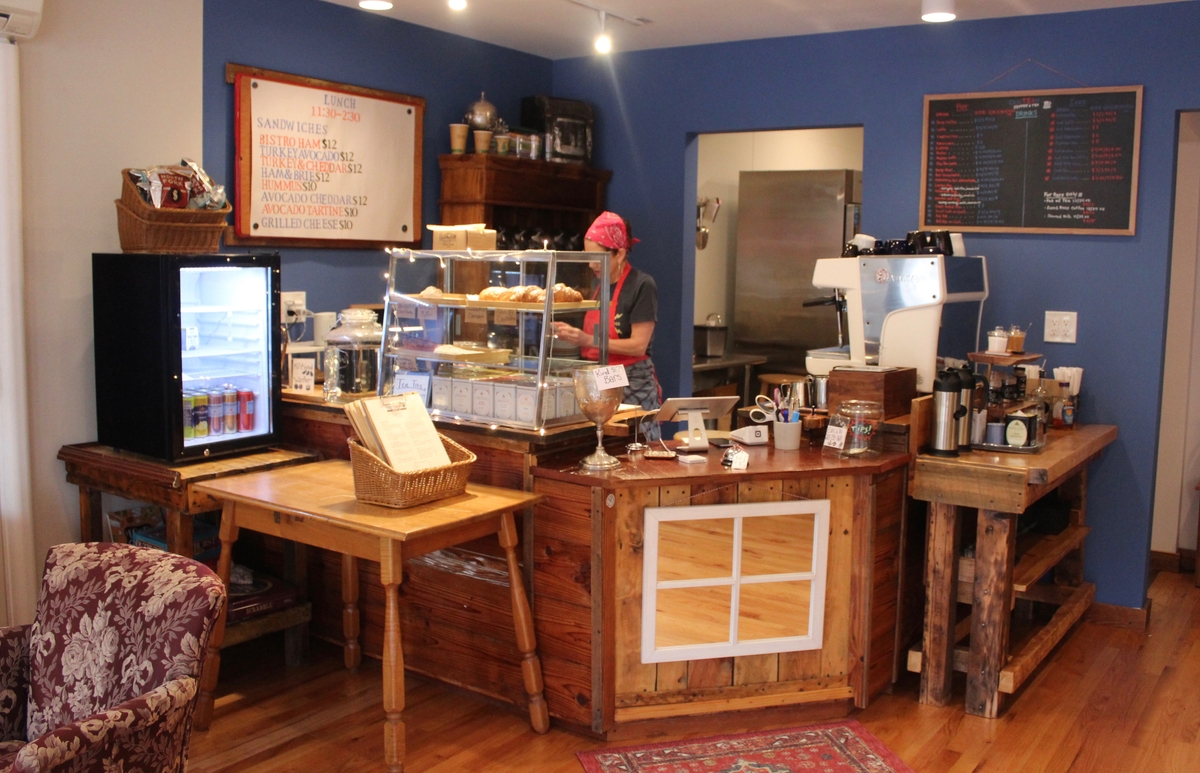
Counter area of the coffee shop Cantean, built by DeRisi from reclaimed materials.
In his own building projects, DeRisi finds the materials he has on hand require flexibility to use them. Just as the architecture students at Yale designed part of the Horse Island research station around the windows from the Peabody building, DeRisi changed the architect’s specs to create the counter and cabinets for Cantean, a coffee shop on Whitney Avenue in Hamden. “When I make something, I try to start with the materials and design out,” DeRisi said. He sees the connections to regenerative architecture, to “use what’s there.”
What if someone wanted to build an average house from salvaged materials? “You’re going to spend more time with your design,” DeRisi said, to make sure you have the materials you need. Using salvaged materials “is more like art … a more complicated process” that also takes more time because “you’re not picking things out of a catalog. You have to find them.” So using salvaged materials, right now, takes more time and money than using conventional materials. This is in part because “we don’t yet have a really good infrastructure for salvaged materials from buildings.”
But that is changing. When Urban Miners opened in 2007, there was only one other business dealing in reclaimed material in Connecticut. Now there are more. There are several Habitat for Humanity stores dealing in reclaimed goods. DeRisi works often with a large hub in Springfield, Mass. And “there’s more local manufacturing of products made out of reclaimed materials — maybe not houses, but furniture,” DeRisi said. The network of small materials providers Organschi talked about is already starting to form and Organschi sees it. “No one’s trying to collect everybody and own it,” he said. DeRisi is part of it, and he sees that “the market is starting to change.”
It’s possible that it has arrived just in time to save the knowledge and skills that more people had before industrialization, when people were, well, handier. “Just like the soils can degrade to the point where you can’t grow forests in them anymore, you can’t grow an economy of small producers,” Organschi said. Nurturing those existing producers is “the kind of thing I want this regenerative building idea to take advantage of.” As an international architect, Organschi also sees at a global scale what DeRisi sees at a local scale, that over time, it has gotten cheaper to reuse and repurpose existing materials, and it has gotten more expensive to make new ones.
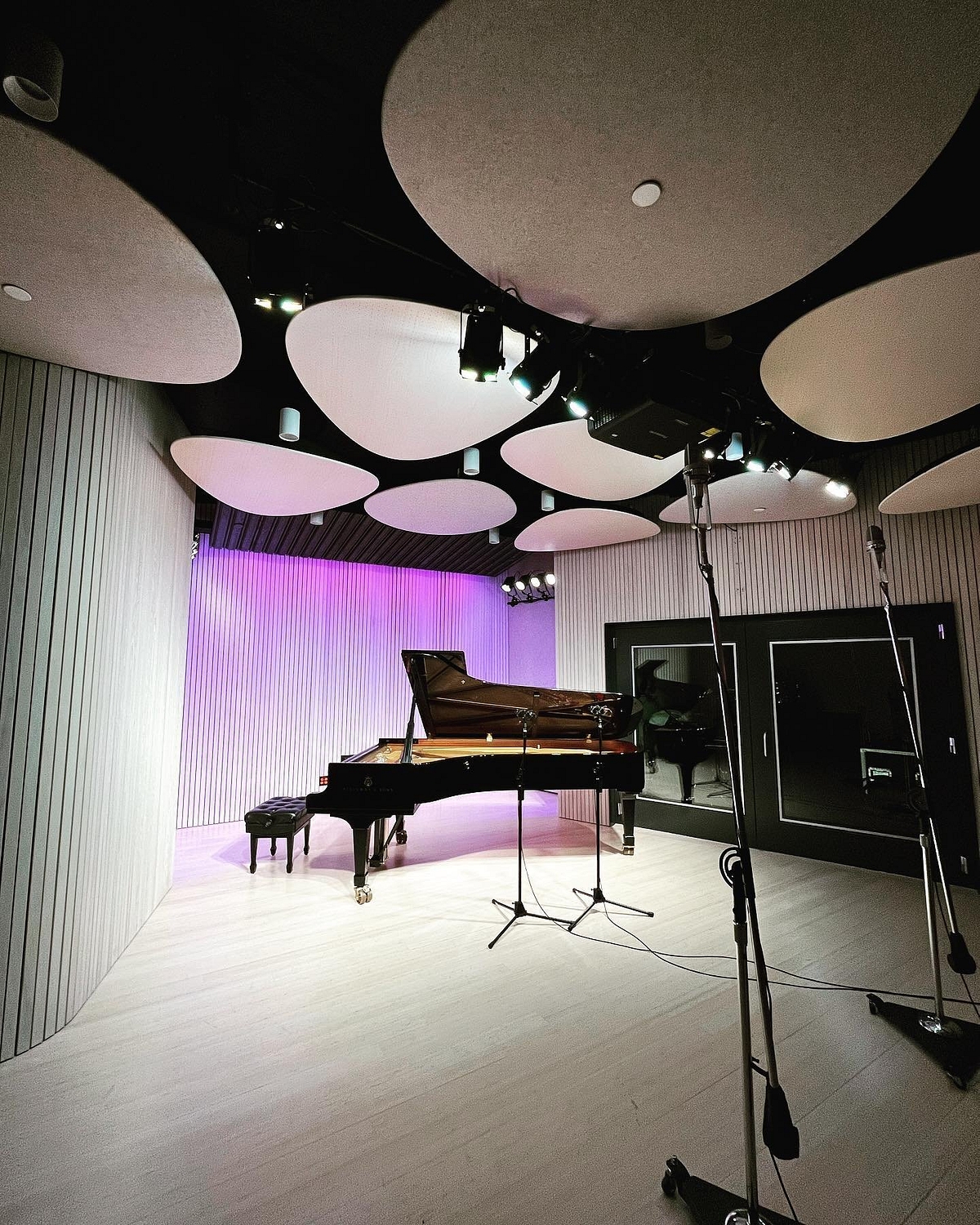
Courtesy Firehouse 12
Interior of Firehouse 12 studio, designed by John Storyk and Gray Organschi.
Both DeRisi and Organschi see possibilities for government policies — from taxes and subsidies to tools like Portland, Ore.‘s demolition delay, or an outright demolition moratorium many are calling for in Germany — to point toward that future. Biden signed an executive order in 2021 hoping to move the construction industry toward using materials with fewer embodied emissions, and the reasoning is economic as much as environmental. Organschi recalled a presentation he gave to the House Committee on Natural Resources run by Bruce Westerman, a Republican representative from Arkansas. “He’s representing a timber state, and they want to build rural economies again,” Organschi said. “He gets it and he’s listening because he has an incentive to be concerned about this stuff. It’s one of the few bipartisan things I can think of.”
And for both DeRisi and Organschi, part of moving people toward a regenerative future is showing it to them. That means designing spaces and building and furnishing places that people like to live and work in; that are, for lack of a better word, beautiful. “It is an art,” DeRisi said. “I’m finally realizing that,” he added with a laugh.
In another way, however, the move toward that future is happening whether we like it or not. “It’s been inching toward that,” DeRisi said. “It makes more sense now than it did in 2007 to save materials” — especially as new materials need to come from farther and farther away, and the costs of making and shipping them rises.
“It’s happening almost like a groundswell,” Organschi said. He quoted green chemist Paul Anastas, who figured out “how to de-oil the Gulf” after the Deepwater Horizon disaster. At a conference, they were talking about the difficulties of composting at scale. There were circumstantial difficulties to getting the job done — cultural, economic, political, logistical. But, Anastas argued, there were “intrinsic benefits you can’t deny. Can we talk about the intrinsic properties of an activity or an action or a material, and then work to get past the circumstantial barriers?” Organschi recalled.“Because I know we can solve those … and embrace the intrinsic benefits.” He has seen the conversation about recycling and renewable resources shift dramatically over the course of his career, from fringe to much more mainstream. And like DeRisi, he seems the inherent value in a sturdy, beautiful length of timber from an old house, ready to used in a new building.
“It’s the low-hanging fruit, to me,” he said.





No one will ever accuse the builders of NH's ugly Lego boxes of practicing regenerative architecture~!